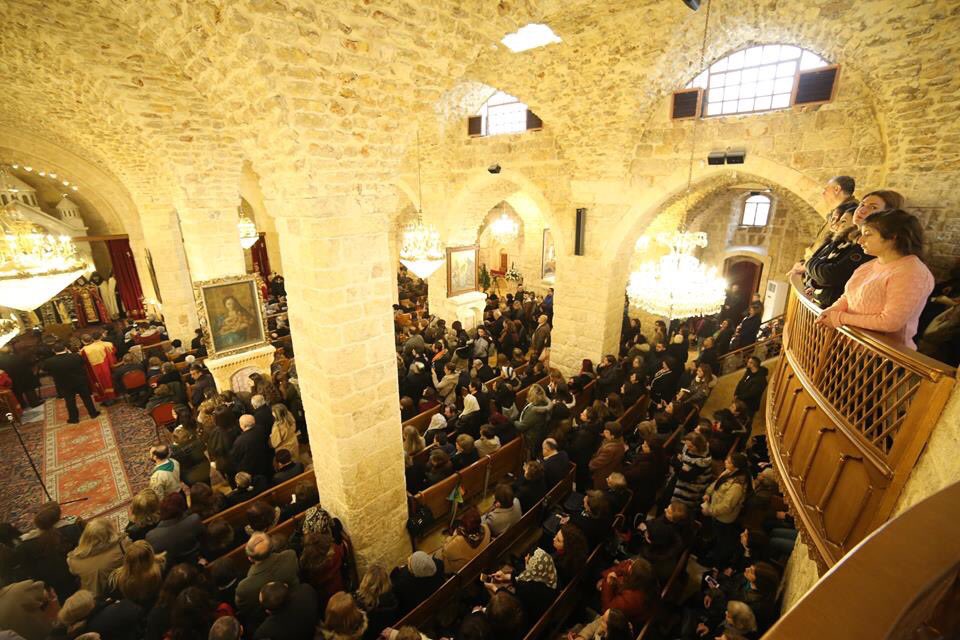It is noteworthy that the recorded presence of Armenians in Syria dates back to the 14th century, and by 1500, the prelacy was established in the vicinity of the Cathedral. In 1616, during his visit to Aleppo, Simon of Poland recounts the situation of this prelacy and the Armenian community, particularly noting the Armenian merchants. It is well-known from Armenian history that Armenians have always established educational centers alongside their monasteries and churches. Thus, a school was built next to the Cathedral, which became an important center for the arts and sciences.
ARAZ KOJAYAN
The situation in Syria captures the attention of Armenians, particularly since the history of Armenians is deeply connected to the land of Aleppo. One of the most significant representations linking the Armenian community's past and present in Syria is the historic Cathedral of the Forty Martyrs, which has remained an unwavering presence for its community throughout the turmoil of history, including the last 14 years and the recent events of the past few weeks.
Reaching us while surviving the ups and downs of centuries, the Cathedral was damaged during the Syrian war, and only on March 31, 2019, coinciding with the feast of its namesake, the first Divine Liturgy was celebrated following a reconsecration ceremony held the day before, signifying its return to its mission. Amidst the ongoing chaos, under the auspices of His Holiness Catholicos Aram I of the Holy See of Cilicia and the leadership of His Eminence Archbishop Magar Ashdjian, the Prelate of Aleppo, humanitarian aid has been extended to the community, and hotlines were established to address the needs of the community. Catholicos Aram I conveyed a message of love and support to the Armenians of Aleppo, emphasizing that they are not alone in their struggles and recognizing the vital role of the Syrian-Armenian community within the broader Armenian diaspora.
It is noteworthy that the recorded presence of Armenians in Syria dates back to the 14th century, and by 1500, the prelacy was established in the vicinity of the Cathedral. In 1616, during his visit to Aleppo, Simon of Poland recounts the situation of this prelacy and the Armenian community, particularly noting the Armenian merchants. It is well-known from Armenian history that Armenians have always established educational centers alongside their monasteries and churches. Thus, a school was built next to the Cathedral, which became an important center for the arts and sciences.By the end of the 16th century, the Seat of Sis temporarily moved to Aleppo, where it developed spiritual and cultural activities alongside administrative and economic ones.

Returning to the present, while Syria celebrates the shedding of its cloak of violence, it still faces uncertainty as the country grapples with the consequences of the government’s collapse. In discussion with V. Rev. Fr. Armen Kalajian, a member of the Cilician Brotherhood serving in the Aleppo diocese, he noted that there have been no new developments since the toppling of the government. He mentioned that opposition leaders have assured community leaders that the Armenian community will continue its religious and communal life. Divine Liturgies are now being held in the Forty Martyrs Cathedral, as well as in other churches such as Surp Asdvadzadzin and Surp Krikor Lusavorich. However, the living conditions remain in a difficult state. There are still severe economic crisis—inflation, currency devaluation, and unemployment—which opens the door for the Armenian diaspora to step in and contribute to assisting the Armenians in Syria.
Ultimately, it is true that oppressors will be overthrown and prisons will be opened (in the end, the infamous Saydnaya prison near Damascus, also known as a human slaughterhouse, collapsed—a place that had been the site of the execution and unimaginable torture of more than 30,000 prisoners without trial). What remains constant is the struggling people. It is crucial that the history, now interwoven with the land, remains strong, and that the diaspora community, which keeps this history alive, holds onto the hope of overcoming even these difficult times. The Forty Martyrs Cathedral, which served as a refuge for survivors of the 1915 genocide and provided shelter for the exiled, continues to stand as a testimony to the resilience of the Syrian-Armenian community.

